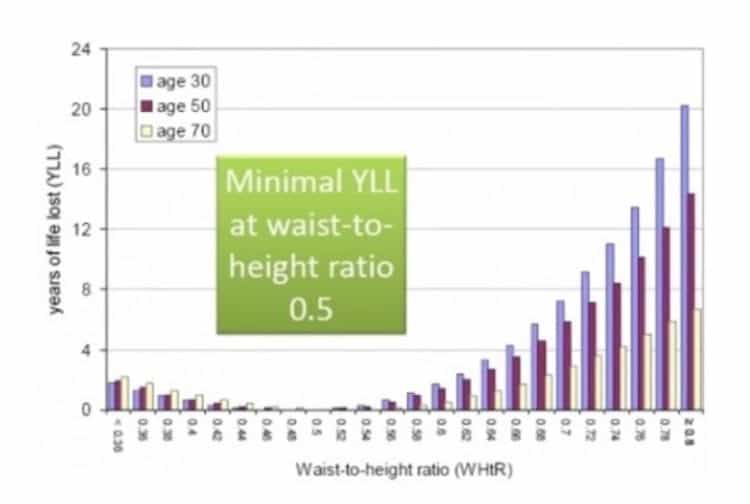I’ve read a waist larger than 35 (for women) or 40 (for men) is dangerous. Why, exactly? And what if youre a transsexual, is it 37?
Also, how important is the waist-hip ratio. Mine is .86, I know this isn’t optimal, but I am post menopausal.
If I had to guess, I’d say that it’s because a larger waist (measured at your navel, not your hips) could be due to visceral fat. Visceral fat is bad.
As for being trans, assuming the person is on hormone therapy, I don’t know if there’s an exact number to keep an eye out for. There may be, but it would probably be a better question for a doctor. Since it’s likely more unique from one person to the next than it is for someone that isn’t trans.
There are multiple different kinds of fat in different locations. Brown fat, white fat, subcutaneous fat, visceral fat, intramuscular fat, etc.
Most fat we see is subcutaneous (the fat under your skin). I don’t think subcutaneous has a lot of metabolic risks.
However visceral fat (the fat inside your torso and on your organs) has a lot of metabolic properties. Visceral fat is what contributes to diabetes and vascular disease.
I’ve heard waist to height ratio is a better predictor of the health effects of obesity than bmi. Ideal is 50% or lower (so if you’re 70" tall, a waist <35") but up to 60% the risks are minor. Beyond 60% and they skyrocket.
For a transgendered person who is not on any sort of physiological regimen, then you’d use the body’s sex as the reference.
For a transgendered person who is on hormone therapy, it’d probably depend on when the therapy was started, because at least part of the difference will be due to bone structure, which will change very little after full adulthood.
